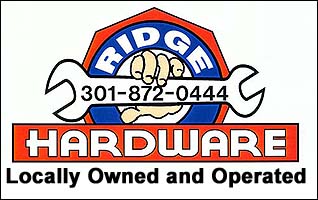By JULIE BAUGHMAN
DUNDALK, Md.—On a gray, misty Saturday morning, John Long trudges through historic Bread and Cheese Creek in Dundalk wearing chest waders and picking pieces of metal rebar, a car battery and an American flag out of the water to carry away later.
Long is the president of Clean Bread and Cheese Creek, a not-for-profit group that organizes large-scale efforts to remove trash from the polluted creek. Bread and Cheese Creek flows into Back River, which in turn flows directly into the Chesapeake Bay.
After many attempts to clean the trash out of his section of the creek in 2008 with friends and family, Long decided the next year that it was time to organize larger cleanups.
“I quickly realized it was way too much for me and just a group of friends to clean up this creek,” he said.
Long put ads in newspapers and fired up social media outlets like YouTube and Twitter to get the word out about his projects. About 40 people showed up to the first cleanup and since then biannual cleanups have consistently attracted more than 100 volunteers at a time.
Long grew up participating in Boy Scouts and eventually became an Eagle Scout, an activity that inspired his love of nature and the environment. This personal history is what inspired him to action when he noticed the immense amounts of trash in the water and in parking lots of businesses that drain directly into the creek, located behind his home.
“All of the trash, all of the toxins from those parking lots drain directly into the stream there,” Long said, of the parking lots next to Burger King and Gold’s Gym on Merritt Boulevard.
Both parking lots have drainage ditches that do, in fact, flow directly into Bread and Cheese Creek. In addition to trash draining from business parking lots, trash also accumulates from North Point Boulevard and I-695, which Bread and Cheese Creek flows beneath.
Donna Morrow, coordinator of the Maryland Clean Marina and Clean Boater Programs at the Department of Natural Resources, said marine debris is not the biggest threat to the bay. However, marine debris, a term used broadly for any type of human-processed or manufactured item found in the water, is one of the most off-putting she said.
“It’s unsightly. It can smell bad and look bad,” Morrow said.
In addition to the obvious visual turnoff created by marine debris, the threat to aquatic life is a serious concern.
Jay Apperson, deputy director of communications at the Maryland Department of the Environment, said marine debris poses a grave threat to the abundant varieties of wildlife inhabiting the bay.
“They can eat the trash and that can lead to their demise,” Apperson said of aquatic life.
Consumption by aquatic life isn’t the only danger marine debris poses. Plastic bags can block sunlight from reaching plants living on the bay floor and chemicals from car parts and other abandoned objects can prevent swimmers or boaters from using certain waterways.
“When you look at water quality, you look at various uses,” Apperson said. “If you have a river that’s full of trash, that’s going to affect the potential for recreational uses.”
Morrow said that one of the best ways to combat trash pollution is to create and foster environmental education programs in schools and communities.
“There’s a big disconnect for those living in the cities who do not feel like they have a connection to the waterways,” Morrow said. “They either don’t know or don’t care that their trash ends up there.”
She also said that teaching basic environmental awareness to children will spread the knowledge throughout a community.
“If you can get the kids, you can get the parents,” Morrow said. “It goes home with them.”
Long said that, in addition to education, hope and confidence in a community plays a huge role in the success of bay cleanup.
“People have to have hope. They have to have a belief that something can be better. A belief that they can be part of making something better. And that’s one of the biggest issues,” Long said.
Long has worked with a number of schools and companies, including Constellation Energy and Towson University, in order to spread the word about his organization and about greener living. He hopes to inspire people with his message of stewardship and encourage people to take matters into their own hands by organizing their own cleanups in their areas.
“We’re all stewards of the land, because we don’t own it, it kind of owns us,” Long said. “You take care of the land, and it’ll take care of you."


